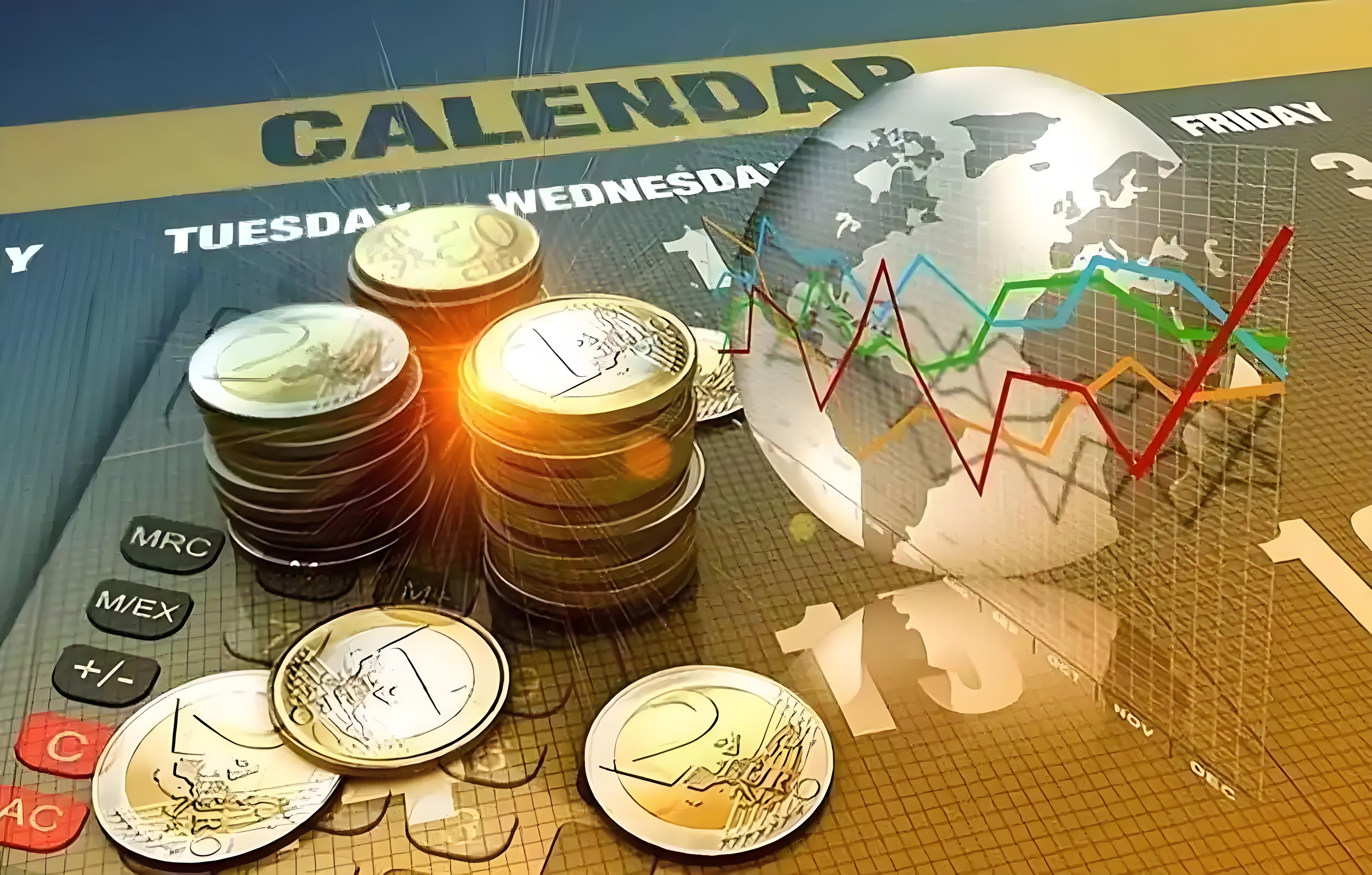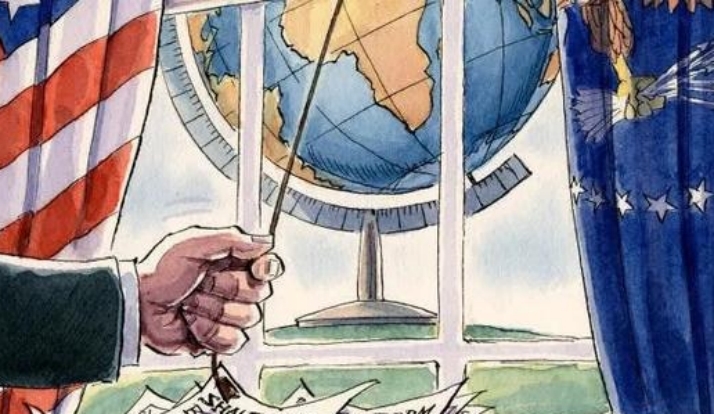
In 2025, the global economy is advancing with difficulties in a complex and volatile environment, presenting an overall stable yet moderately growing trend. The "World Economic Situation and Prospects 2025" report released by the United Nations shows that the global economic growth rate is expected to be 2.8% in that year, basically the same as in 2024. The Organization for Economic Co - operation and Development (OECD) is relatively optimistic, predicting a growth rate of 3.3%, a slight increase of 0.1 percentage points compared with 2024. The International Monetary Fund (IMF) forecasts that the growth rate will remain at 3.2%. These figures indicate that although the global economy maintains a certain degree of resilience, the pace of recovery still faces many obstacles.
As the world's largest economy, the economic trend of the United States attracts much attention. The return of Trump has brought many uncertainties to the US economy and even the global economy. His threatened trade protectionist policies such as imposing tariffs on many countries will undoubtedly trigger a new round of trade frictions, casting a shadow over the already fragile global economic growth. The OECD expects the US GDP growth rate to slow down to 2.4% and 2.1% in 2025 and 2026 respectively. At the same time, the direction of the Federal Reserve's monetary policy is also full of variables. Although inflation has eased, the frequent fluctuations in economic data and the policy adjustments of the new government make the Fed's interest - rate - cut rhythm difficult to predict. This not only affects the stability of the US domestic economy but also has a chain reaction on the global financial market.
The European economy still shows weak growth in 2025. The European Central Bank recently lowered its growth forecast for Europe in 2025 to 1.1%, and the prospects are not optimistic. Germany, as the "locomotive" of the euro - zone economy, has also seen its economic growth severely restricted. The Bundesbank said that Germany's GDP may only grow by 0.2% in 2025, a significant downward adjustment of 0.9 percentage points from the previous forecast of 1.1%. The situation in France is equally worrying. The Bank of France expects GDP growth of 0.9% in 2025, lower than the 1.2% forecast in September. The euro - zone as a whole faces multiple difficulties such as insufficient domestic demand and a weak manufacturing industry, and the road to economic recovery is bumpy.
However, Asian countries are expected to become a major highlight of global economic growth in 2025. The IMF has raised its growth forecast for emerging Asian economies, and HSBC expects the economies of India and ASEAN countries to maintain strong growth. The economic growth of Asia (excluding Japan) is expected to remain at 4.4% in 2025, much higher than the global average expected growth rate of 2.6%. As the largest economy in Asia, after the Central Economic Work Conference clearly implemented a more proactive and effective macro - policy, China has injected strong confidence and momentum into its economic development. China continues to promote industrial upgrading, expand domestic demand, and continuously optimize the business environment, and its economy is expected to achieve high - quality growth on the basis of stable operation.
In terms of policies, most central banks around the world shifted to a loose monetary policy in 2025. This measure aims to reduce financing costs and stimulate economic growth. If the economic downturn and downward pressure on inflation persist, the European Central Bank is expected to continue cutting interest rates throughout the year, and the rate cut may be larger than that of the Federal Reserve. There is a serious divergence within the Bank of England regarding the interest - rate - cut path in 2025, increasing the uncertainty of monetary policy. In view of their own economic development needs, many central banks in Asian countries may adopt a more aggressive interest - rate - cut strategy than the Federal Reserve to promote economic recovery. However, the situation in Japan is different. Given the upward inflation and moderate economic expansion, the market expects the Bank of Japan to continue raising interest rates to curb inflation and maintain stable economic development.
However, the world economy in 2025 also faces many severe challenges and risks. In terms of geopolitical risks, regional conflicts, trade protectionism, and tense international relations continue to ferment. Geopolitical hot - spot issues such as the Russia - Ukraine conflict and the Israel - Palestine conflict not only have severely damaged the regional economies but also had an adverse impact on global trade, investment, and economic growth. In the context of continued geopolitical tensions, a new surge in commodity prices may further disrupt the global inflation level, hinder central banks from loosening monetary policies, and thus pose a major challenge to fiscal policies and financial stability.
The vulnerability of the global financial system cannot be ignored. The current uncertainty of economic policies can easily trigger violent fluctuations in the financial market. Whether economic policy adjustments exceed or fall short of expectations may further tighten global financial conditions, exerting huge pressure on investment and growth. The current divergence between financial market volatility and geopolitical risks is intensifying. Asset prices may not reasonably reflect the potential impacts of wars and trade disputes, and this disconnection makes a sharp shock more likely to occur in the short term. Once there are significant fluctuations in the financial market, it will be more difficult for enterprises to finance, dampening investment confidence and dragging down the development of the real economy.
Some economies also face significant sovereign debt pressure. With the rise in global interest rates and the slowdown of economic growth, the debt burden of some countries is becoming increasingly heavy. Sovereign debt pressure not only affects the domestic economic stability of these countries but may also trigger turmoil in the global financial market. If the debt problems of these economies are not properly resolved, it may in turn affect their debt - repayment ability, further leading to turmoil in the global financial market.
Despite the numerous challenges, there are also some development opportunities for the world economy in 2025. At the global level, countries should strengthen international cooperation to jointly address global challenges such as climate change, geopolitical risks, debt crises, and global public health events. By strengthening cooperation and jointly formulating and implementing solutions, risks can be effectively reduced, creating a stable environment for economic development. Promoting trade liberalization, resisting trade protectionism, and safeguarding the multilateral trading system can provide broader market access opportunities for developing countries and promote the balanced development of the global economy. Strengthening debt management and establishing an effective global debt restructuring mechanism can help developing countries solve debt crises and restore economic growth.
In addition, the development and utilization of critical mineral resources present opportunities for economic growth, poverty reduction, and sustainable development in relevant countries. With the growing global demand for clean energy, new - energy vehicles, and other fields, the importance of critical minerals such as lithium, cobalt, and nickel is becoming increasingly prominent. For countries with critical mineral resources, the rational development and utilization of these resources can not only bring substantial economic benefits but also promote the optimization and upgrading of their domestic industrial structures, achieving sustainable economic development.
In 2025, the world economic situation is complex and changeable, full of both opportunities and challenges. Countries need to remain vigilant, strengthen cooperation, and formulate reasonable economic policies to respond to the ever - changing economic environment and achieve stable economic growth and sustainable development.

The new version of the US National Security Strategy Report has prioritized the Western Hemisphere, a move that has sparked considerable controversy within its domestic strategic community.
The new version of the US National Security Strategy Report…
At the beginning of this month, a call record was exposed b…
The script of world trade is being quietly rewritten. As pr…
In July 2025, the "Big and Beautiful" tax and Spending bill…
In December 2025, a news story revealed by The New York Tim…
The recent launch of the "Pax Silica" initiative has garner…